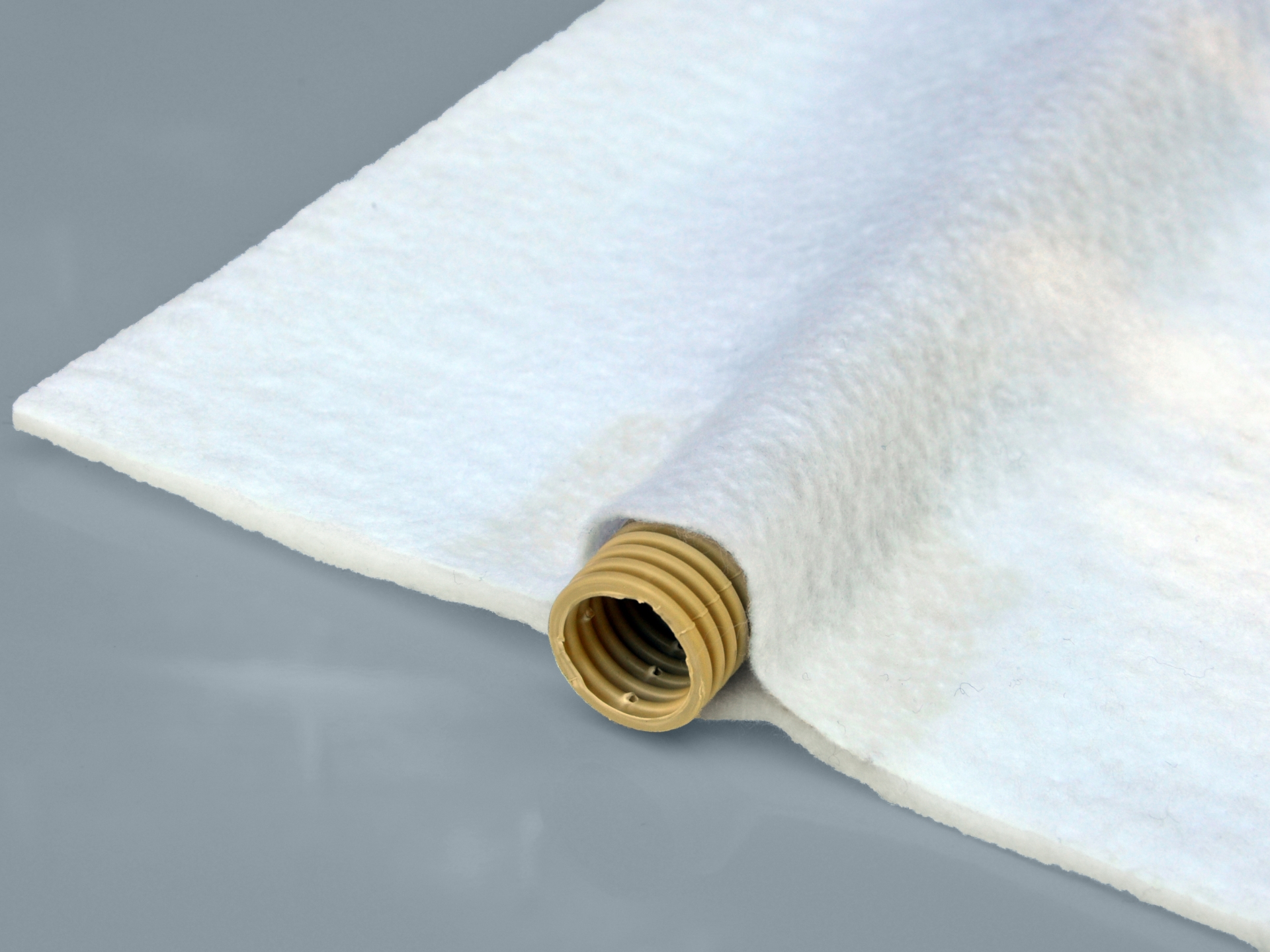MINING ENGINEERING
LANDFILL
PUBLIC WORKS
HYDRAULIC STRUCTURES
BUILDING CONSTRUCTION
MINING ENGINEERING DRAINTUBE
Use
After operation, the tailings storage areas are covered by a final impermeable cover system. This is important for the protection of the environment by preventing the evaporation of tailings into the atmosphere or the infiltration of liquids (leaching) and oxygen (oxydation) of the ores.
The DRAINTUBE® ensures the drainage of the final covers of mine tailings storage sites. It offers a solution adapted to filtration, rainwater drainage and/or gas collection and mechanical protection of the geomembrane against puncture. Installed above and below the geomembrane, this drainage geocomposite allows fluids to be evacuated to a collector trench. It replaces the geomembrane protection geotextile, the granular drainage layer, and the filtration geotextile.
Benefits
- Effective drainage of rainwater (on the geomembrane) or gas (under the geomembrane)
- Filtration of the surrounding soil layer
- Mechanical protection of the geomembrane against puncture
- Improvement of the performance of the impermeable cover system by limiting the hydraulic head on the geomembrane and the gas pressure under the geomembrane
- Stability of the final cover
- Easy installation with a single product to unroll
- Cost-effective and environmentally friendly solution as it replaces granular layers
Features
 Drainage
Drainage
 Filtration
Filtration
 Mechanical protection
Mechanical protection
Characteristics
- Multi-linear drainage geocomposite (ASTM D4439)
- Perforated mini-pipes made of polypropylene
- 3 diameters of perforated mini-pipes: 16 mm, 20 mm and 25 mm
- 4 spacing options between the mini-pipes: 2 m, 1 m, 1/2 m and 1/4 m (80’’, 40’’, 20’’, 10’’)
- Standard roll size: 3.98 m x 75 m (13.1’ x 246’)
FIND OUT MORE...
Projects completed with DRAINTUBE
Tailings final cover

[Mining engineering]
Manitoba Mine - Canada
255 000 m2
As part of the rehabilitation of the mine site, DRAINTUBE® drainage geocomposite was chosen to replace granular resources to collect and evacuate rainwater as well as to limit oxygen infiltration from the final cover.





